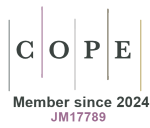Clinical pharmacy and telemedicine: an opportunity to improve epilepsy management
DOI:
https://doi.org/10.33393/grhta.2024.3095Keywords:
Clinical pharmacy, Epilepsy management, Healthcare integration, TelemedicineAbstract
Clinical pharmacy, as defined by the European Society of Clinical Pharmacy, is a comprehensive professional practice encompassing all pharmacist profiles regardless of the setting. It focuses on promoting optimal drug utilization for patient-centric clinical outcomes. Telemedicine leverages information and communication technologies for remote healthcare delivery, bridging geographical gaps. The integration of clinical pharmacy and telemedicine is crucial in modern healthcare paradigms, especially for patients with chronic illnesses. In 2021, marketing authorization was granted for cenobamate as adjunctive treatment for focal-onset seizures with or without secondary generalization in adults with epilepsy who have not been adequately controlled despite a history of treatment with at least two antiepileptic medicinal products. This review emphasizes the synergistic role of clinical pharmacists and neurologists in utilizing telemedicine for patient counselling, drug information dissemination, adverse drug reaction surveillance, and personalized medication management within the context of epilepsy care. This integration could enhance patient safety, therapeutic outcomes and address socio-economic challenges faced by chronic patients.
References
- Pharmacy ESoC. Clinical pharmacy, vision and mission. https://escpweb.org/about-us/vision-mission-values/. Accessed April 2024.
- Miserendino M. Professione farmacista: cambia anche in ambito clinico. Dall’oncologia alla farmacia dei servizi, ecco le nuove competenze. 2024. https://www.farmacista33.it/aggiornamento-professionale/28604/professione-farmacista-cambia-anche-in-ambito-clinico-dall-oncologia-alla-farmacia-dei-servizi-ecco-le-nuove-competenze.html. Accessed April 2024
- Nobili A. IRCCS IdRFMN. Appropriatezza prescrittiva: pubblicate le strategie operative per l’ottimizzazione nella prescrizione delle terapie. 2023. https://www.marionegri.it/magazine/appropriatezza-prescrittiva. Accessed April 2024.
- World Health Organization (WHO). Consolidated telemedicine implementation guide. 2022. https://www.who.int/publications/i/item/9789240059184. Accessed April 2024.
- Commission of the European Community. Communication from the Commission to the European parliament, the Council, the European Economic and Social Committee and the Committee of the regions on telemedicine for the benefit of patients, healthcare systems and society. 2008. https://eur-lex.europa.eu/LexUriServ/LexUriServ.do?uri=COM:2008:0689:FIN:EN:PDF. Accessed April 2024.
- Ministero della Salute. eHealth - Sanità digitale. Linee di indirizzo nazionali sulla telemedicina. 2024. https://www.salute.gov.it/portale/ehealth/dettaglioContenutiEHealth.jsp?id=5525&area=eHealth&menu=telemedicina. Accessed April 2024.
- Osservatori.net. Digital innovation. Sanità digitale oltre l’emergenza: più connessi per ripartire. 2021. https://www.osservatori.net/it/eventi/on-demand/convegni/convegno-risultati-ricerca-osservatorio-innovazione-digitale-sanita-convegno. Accessed April 2024.
- European Commission. The recovery and resilience facility. https://commission.europa.eu/business-economy-euro/economic-recovery/recovery-and-resilience-facility_en. Accessed April 2024.
- IRCCS IdRFMN. L’Epilessia: cause, sintomi, cure e nuovi trattamenti. 2023. https://www.marionegri.it/magazine/epilessia. Accesssed April 2024.
- Mennini FS, Sciattella P, Scortichini M. Socio-economic impact of epilepsy in Italy. Glob Reg Health Technol Assess. 2022;9(suppl 2):10-13. https://doi.org/10.33393/grhta.2022.2427 PMID:36628126 DOI: https://doi.org/10.33393/grhta.2022.2427
- World Health Organization (WHO). Epilepsy: a public health imperative. 2019. Epilepsy: a public health imperative (who.int). Accessed April 2024.
- La Neve A, Falcicchio G. Governance of the clinical pathway and management of the patient suffering from epilepsy and drug-resistant epilepsy. Glob Reg Health Technol Assess. 2022;9(suppl 2):4-9. https://doi.org/10.33393/grhta.2022.2418 PMID:36628125 DOI: https://doi.org/10.33393/grhta.2022.2418
- Sperling MR, Klein P, Aboumatar S, et al. Cenobamate (YKP3089) as adjunctive treatment for uncontrolled focal seizures in a large, phase 3, multicenter, open-label safety study. Epilepsia. 2020;61(6):1099-1108. https://doi.org/10.1111/epi.16525 PMID:32396252 DOI: https://doi.org/10.1111/epi.16525
- Samia P, Sahu JK, Ali A, et al. Telemedicine for Individuals with epilepsy: recommendations from the International League Against Epilepsy Telemedicine Task Force. Seizure. 2023;106:85-91. https://doi.org/10.1016/j.seizure.2023.02.005 PMID:36803864 DOI: https://doi.org/10.1016/j.seizure.2023.02.005
- Assenza G, Lanzone J, Brigo F, et al. Epilepsy care in the time of COVID-19 pandemic in Italy: risk factors for seizure worsening. Front Neurol. 2020;11:737. https://doi.org/10.3389/fneur.2020.00737 PMID:32719655 DOI: https://doi.org/10.3389/fneur.2020.00737
- Licchetta L, Trivisano M, Baldin E, et al. TELEmedicine for EPIlepsy Care (TELE-EPIC): protocol of a randomised, open controlled non-inferiority clinical trial. BMJ Open. 2021;11(12):e053980. https://doi.org/10.1136/bmjopen-2021-053980 PMID:34862297 DOI: https://doi.org/10.1136/bmjopen-2021-053980










